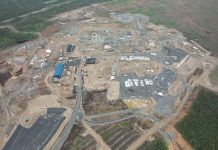In December 2024, Arkadia Lithium announced that its shareholders had voted in favor of selling the company to Australian mining giant Rio Tinto for $6.7 billion (approximately RMB 48.9 billion). The company previously stated that about 98% of shareholders voted in favor of the sale. Under the agreement, Rio Tinto will gain access to Arkadia Lithium’s lithium mines, processing facilities, and deposits located in Argentina, Australia, Canada, and the United States, along with customers including Tesla, BMW, and General Motors. The deal is expected to be completed by mid-2025, and Rio Tinto will become the world’s third-largest lithium miner, behind Albemarle and SQM.
Rio Tinto is one of the largest resource extraction and mineral product suppliers globally, the second-largest producer of iron ore, and a leader in mineral exploration, extraction, and processing. Its major products include aluminum, copper, diamonds, energy products (coal and uranium), gold, industrial minerals, and iron ore.
Recently, Rio Tinto announced the introduction of a new generation of intelligent crane systems in its Western Australian mining region, a move expected to increase mining efficiency by 30%. This news once again highlights the key role cranes play in modern mining operations. From ore extraction to equipment maintenance, cranes have become an indispensable “steel giant” in mining operations.
In open-pit mining operations, gantry cranes, with their large spans and heavy lifting capacities, take on the critical tasks of ore loading and equipment installation. For example, the 2000-ton gantry crane recently introduced by Rio Tinto has a working radius of up to 80 meters, easily handling the installation and positioning of large mining equipment. Moreover, the intelligent control system equipped with the crane provides millimeter-level positioning accuracy, greatly improving operational safety.
In underground mining operations, overhead cranes play an irreplaceable role. In narrow mine tunnels, overhead cranes use their flexible walking mechanisms and precise lifting capabilities to perform key tasks such as ore hoisting and equipment maintenance. In particular, the application of explosion-proof overhead cranes in deep mining operations has effectively addressed safety risks associated with underground operations.
In the ore processing stage, grab cranes demonstrate their unique advantages. Equipped with specially designed grabs, they efficiently perform ore loading, unloading, and stacking tasks. For example, in a copper ore beneficiation plant, after the introduction of two 10-ton grab cranes, the daily ore processing capacity increased by 25%, and energy consumption decreased by 15%. Intelligent grab cranes can also automatically adjust the gripping force based on ore characteristics, minimizing ore losses.
With the development of 5G technology and artificial intelligence, the application of cranes in the mining industry is entering a new phase. Features such as remote control, automatic obstacle avoidance, and intelligent scheduling not only improve operational efficiency but also significantly enhance the working environment for miners. In the future, intelligent crane systems with self-learning capabilities will further drive the mining industry toward greater intelligence and automation.
From simple hoisting to today’s intelligent operations, the deep integration of cranes with mining is reshaping the production model of modern mines. This continuous evolution of the “steel giant” will undoubtedly inject new momentum into the development of the mining industry.







